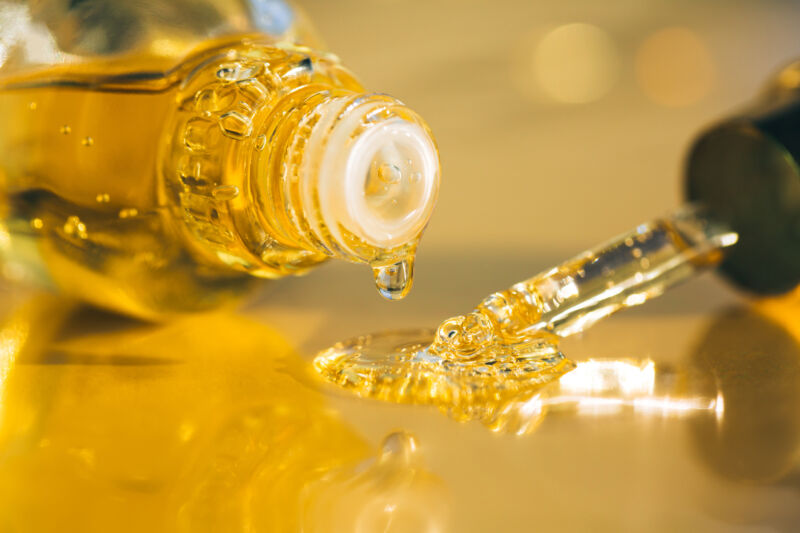
Over the course of the COVID-19 pandemic, researchers have examined a variety of medication to see in the event that they inhibit the virus. Most of those assessments did not find yourself going anyplace; even the few medication that did work usually required concentrations that might be inconceivable to attain inside human cells. And some (taking a look at you, ivermectin and chloroquine) took off with the general public regardless of iffy proof for effectiveness, seemingly inflicting practically as many issues as they might have solved if they really labored.
Nonetheless, two years on, phrase of one more one among these drug experiments triggered a little bit of a stir, because the drug in query was a cannabinoid. Now, the total information has gone by way of peer evaluate, and it seems higher than you would possibly anticipate. However the variety of caveats is fairly staggering: the impact is small, it hasn’t been examined in sufferers, the standard assurance of business cannabidiol (CBD) merchandise is sort of nonexistent, and—in all probability most significantly—one other cannabinoid blocks the impact fully.
With that out of the way in which, on to the info.
Why take a look at cannabinoids?
One of many large focuses of the drug testing was to search for chemical compounds that have been already authorised to be used in people, which might simplify their use as remedies for a separate dysfunction since all the security information ought to be out there already. And CBD is authorised to be used in individuals with seizure problems, though the biochemical foundation of its effectiveness is unclear.
In any case, the researchers behind the brand new work (primarily on the College of Chicago) began with lung most cancers cells that produce the protein that SARS-CoV-2 makes use of to contaminate cells and dumped each the virus and CBD on the cells. And it labored. At non-toxic doses, the copy of the virus was strongly inhibited by CBD. The workforce went on to substantiate the end in different lung cell strains. In addition they demonstrated {that a} partly metabolized by-product had the same impact, however a spread of further cannabinoids didn’t.
And that is the place we get to one of many downsides. THC, essentially the most potent mind-altering substance in hashish, didn’t impact its personal. However when given concurrently CBD, it reversed CBD’s inhibition of viral development. So merely making an attempt to make use of hashish for viral safety will fail fairly miserably.
In any case, that is the place the work begins to maneuver past the lots of of comparable “let’s throw medication on some cells” research which were finished: the researchers do their finest to determine how CBD works. They checked whether or not it stopped human cells from producing the protein that the virus latches onto when infecting them, however that wasn’t the trigger. They usually confirmed that viruses may nonetheless get inside cells through the use of the SARS-CoV-2 spike protein.
However as soon as the virus will get inside, not loads appears to occur. Little or no of the spike protein will get made in contaminated cells handled with CBD, and ranges keep low for as much as 15 hours after an infection.















